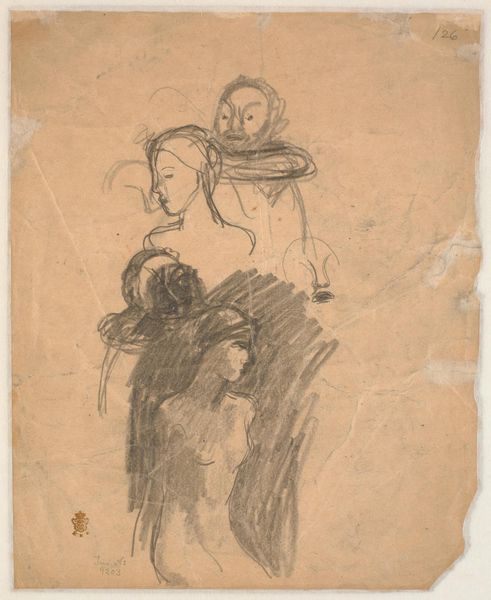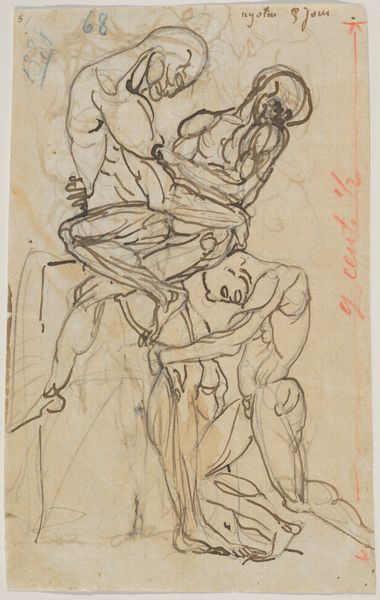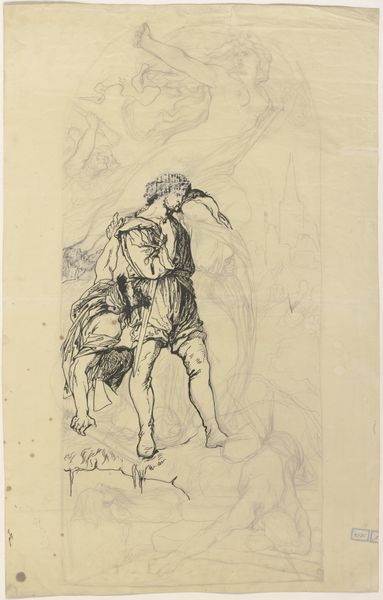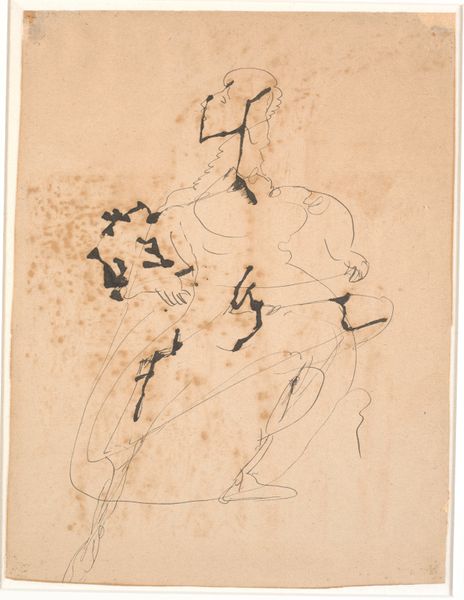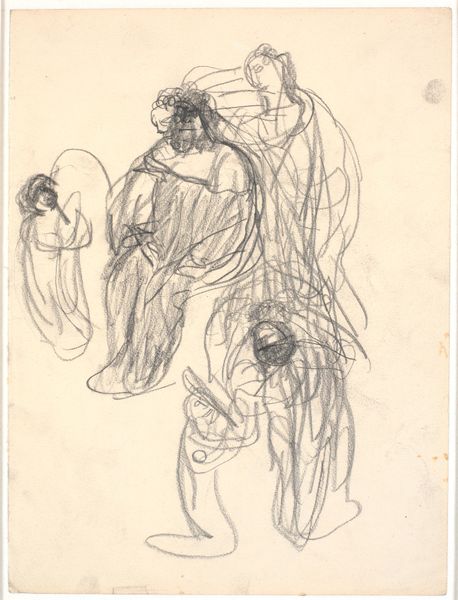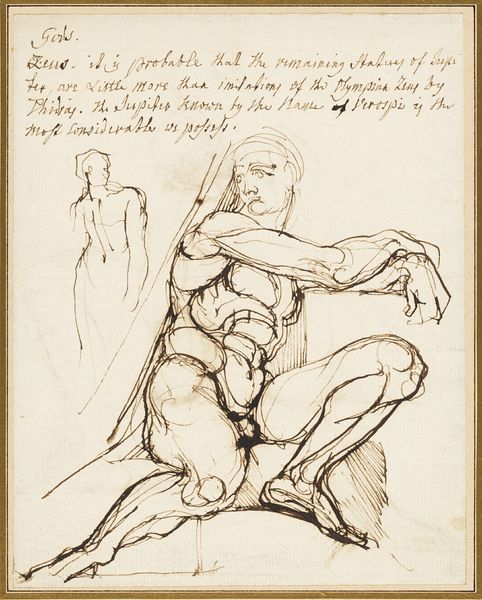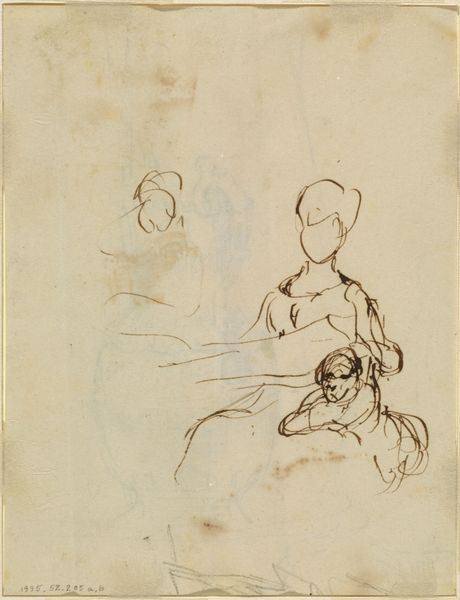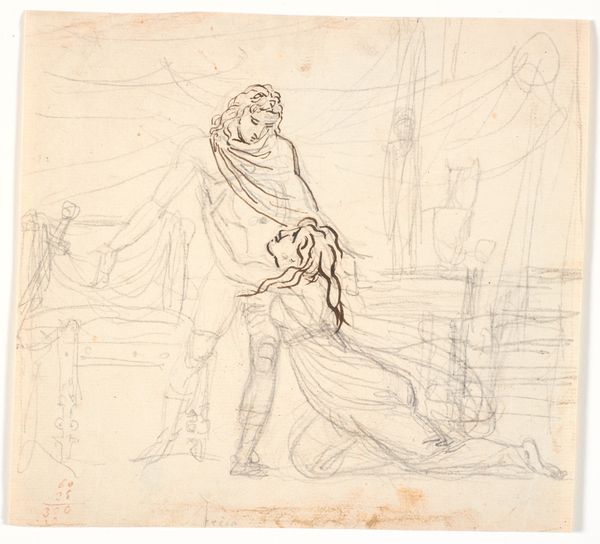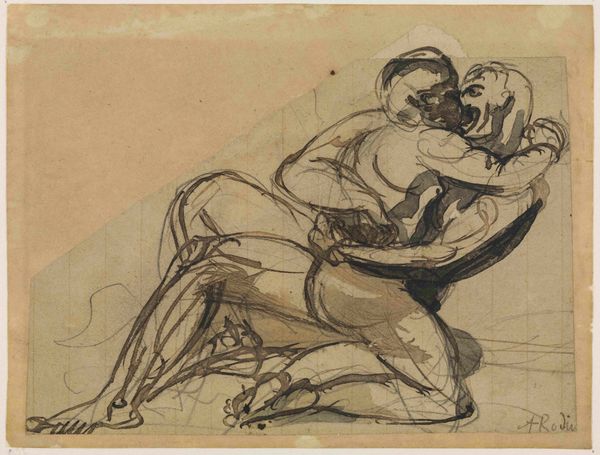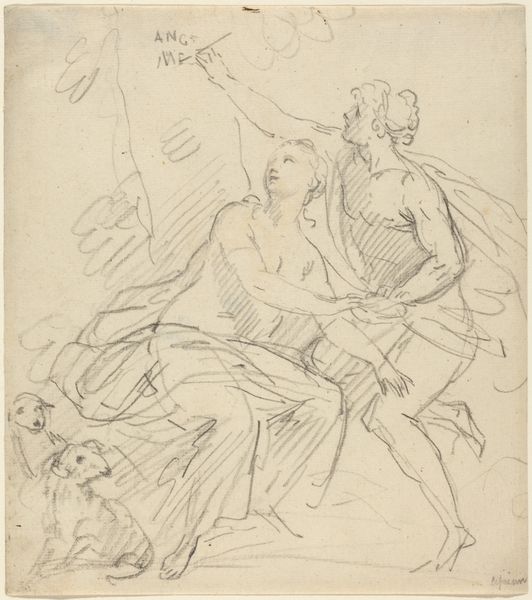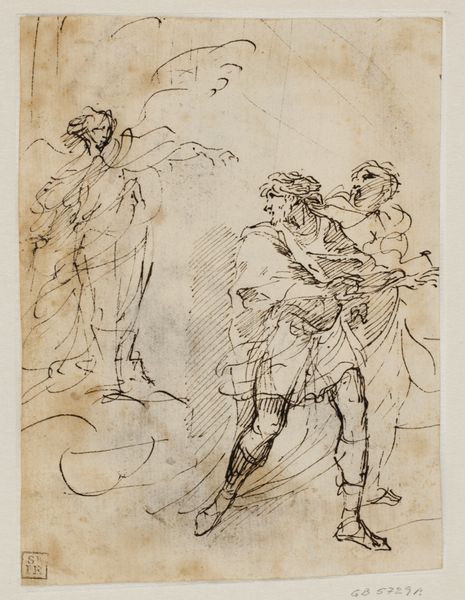
drawing, pencil
#
portrait
#
drawing
#
figuration
#
pencil
Dimensions: 351 mm (height) x 286 mm (width) (bladmaal)
Editor: We're looking at "Sif og Vølund," a pencil drawing by Karl Isakson from 1907, here at the SMK. The composition, with the figures overlapping and those intense facial expressions, feels really…raw and unsettling. What do you see in this piece that maybe I'm missing? Curator: The rawness you perceive is compelling, isn't it? This drawing, depicting figures from Norse mythology, wasn't created in a vacuum. Consider the cultural anxieties of the early 20th century. Isakson is engaging with folklore, yes, but also perhaps with emerging psychological theories, wouldn't you agree? The overlapping figures could be read as representing a clash of internal forces, or even societal power dynamics reflected in the depiction of men and women in mythology. What is the viewer expected to extract from the way Isakson chose to present this mythology? Editor: So, you're suggesting the work isn’t *just* a retelling of a myth, but a commentary on society through the lens of that myth? Curator: Exactly. Artists don't exist separately from the societies and times they find themselves in. By revisiting and reinterpreting these stories, he might have intended to offer insights into gender roles or human psychology in general during the dawn of modernism, depending upon what the museum-going audience made of his work. What sort of cultural values can this drawing reflect or potentially critique, when viewed in a gallery setting? Editor: That gives me a lot to think about! Seeing the artwork as a dialogue between past stories and present social dynamics changes my whole perspective. Thank you. Curator: My pleasure. Always consider the context in which art is created and presented, as that often helps unlock deeper meanings and raises questions you never thought about before!
Comments
No comments
Be the first to comment and join the conversation on the ultimate creative platform.
